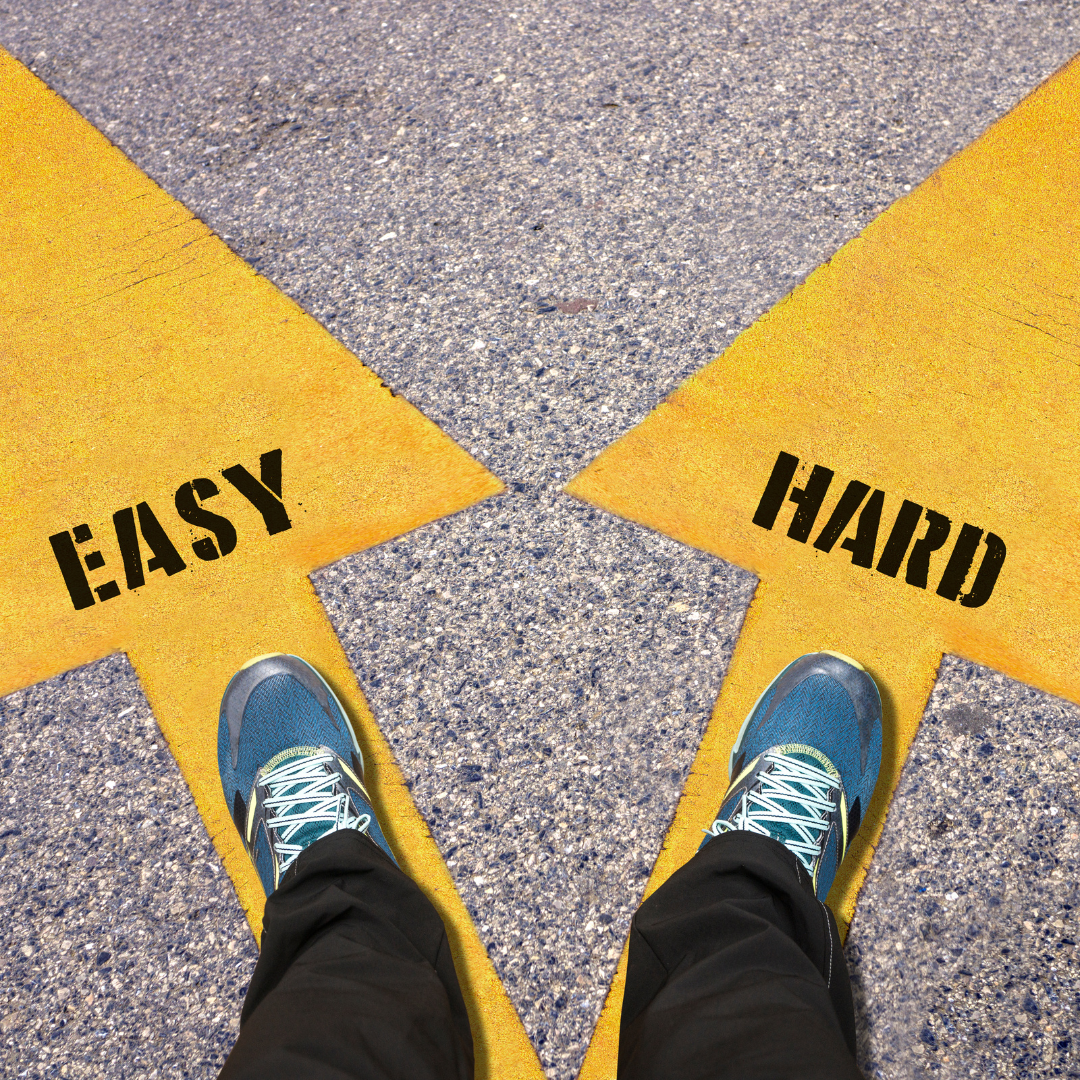How to Change Your Habits and Make it Stick - Part 3
Over the last several months, we’ve been chatting about how habits are formed, how they affect your daily life, and how to start making changes. If you didn’t catch the previous articles, you can read them here: How Habits Affect Your Life + How to Make Them Work for You, How to Change Your Habits and Make it Stick - Part 1 and How to Change Your Habits and Make it Stick - Part 2.
We can’t stop habits from forming and nor do we want to! Habits help us! Habits are great when they work for us and not against us. Whenever we want to change our routines, we need to change our habits. This is especially true every time there’s a change in season or a change in routine. Think back to the end of August and the beginning of September. There’s a lot of change in a couple of short weeks. Not having habits and routines that support you can make changing things harder than it needs to be.
Changing habits can be as easy as making the new habit easy or making something we want to stop doing more difficult. As humans, we naturally gravitate towards easy over hard - let that work for you in this case!
Make it Easy or Make it Difficult
This is the third law of changing a Habit from Atomic Habits by James Clear. If you make what you want to do easy, you’re more likely to do it. If you make it difficult, you’re more likely to avoid it.
How long does it take to form a new habit? This question has been answered by many, but the reality is that the answer differs from person to person and differs habit to habit. Some habits are built quickly, while others take longer.
Ultimately, it comes down to how easy, attractive, obvious and satisfying a habit is. The more a habit is pleasurable, the more you choose to find ways to do it. The reverse is true too. The more unpleasant a habit is, the harder it is to implement even if you truly want the new habit. The more you practice a new action, the more likely it is that you will truly implement the habit. This law helps to increase the frequency of the new action making it a habit.
Make it Easy
Energy is precious and your brain is wired to conserve energy whenever possible. This is part of why habits exist in the first place - your brain is making the majority of your daily life habits to free up mental resources and reduce the energy needed to get through your day.
By working with this, you can increase your ability to incorporate new habits easily. By making your beneficial habits easy, you’re more likely to complete them even when the motivation to do so is low.
The habit of doing 100 pushups daily is difficult when compared to the habit of doing just 1 pushup, especially if you’re not used to doing any pushups. Choosing the easy action first helps to build to achieving the full habit. This might even look like starting by doing pushups against a wall while standing up, then moving to doing pushups on the floor with your knees down, to then lifting your knees.
A single pushup against a wall while standing up is easy as compared to 100 pushups on the floor.
Choosing ways to create the path of least resistance will also help to create any habit you want to create.
This may look like packing your gym bag the night before or laying out clothing and shoes for walking if you want to start walking in the morning. If you’re looking to build the habit of making a healthy breakfast in the morning, lay out all the things you need to make the breakfast the night before. For the items that need to stay in the fridge, make sure they’re at the front of the fridge and are easily accessible the next morning.
Also consider choosing the simplest action that can be accomplished in two minutes or less to start a new habit. The moments or gateway choices can and do influence the next set of choices and the set after that and so on.
The choice to stop at McDonalds or to stop at the grocery store for lunch is the habit that can make a significant difference in your choice to eat healthily or to eat fast food.
At McDonalds, your next set of choices are limited to what’s on the menu. Those choices are also heavily influenced by marketing and the smell of fries in the air. At the grocery store, you have different choices that include healthier options. This choice then impacts how you feel for the afternoon and whether you have a boost of energy or a slump around 3-5 pm.
Finally, identifying the gateway choices will help you reduce the friction involved in making the choice you truly want to make. This can be done by taking the end result of your goal (ie: running a marathon) and putting it at one end of a spectrum and noting it as very hard, then listing out the actions that are hard (running a ½ marathon), moderately hard (running a 10K), somewhat hard (running a 5K), somewhat easy (walking 10,000 steps), easy (walking for 10 minutes) and very easy (putting on your running shoes).
By doing the very easy thing, you’re more likely to do the easy thing and so on while building up to the very hard thing that’s your ultimate goal.
By finding the two minutes or less (aka very easy) step that starts the habit you want to build, you reduce the difficulty associated with the habit.
This might look like putting on your running shoes, or getting out your yoga mat and simply sitting on it or it might look like choosing to read one page of a book or put $1 into a savings account. By doing any of these things, you’re one step closer to making it a habit.
Make it Difficult
By adding steps to accomplishing a task, it can be enough to help you stop the behaviour you don’t want to do.
If you’re trying to stop mindless scrolling of social media on your phone, delete the app. Each time you want to scroll, you’ll need to reinstall the app, login and scroll. Once you’re done, delete the app again. This example also uses the inverse of the first law - make it invisible.
By adding the steps of needing to install the app and login, this may increase the difficulty enough to result in avoiding mindless scrolling when you’re bored because it’s no longer easy.
If you’re trying to eat less of a certain food, place the container of food in a different (more difficult to get) location. This might be putting the ice cream in the back of the freezer underneath the vegetables so you have to dig to get it. It also might look like putting it in a different freezer on a different level of your house so you have to go get it. When you do decide to get the ice cream, make sure to bring the bowl and scoop to the ice cream, scoop out the amount you want and then re-bury the ice cream in the freezer.
By doing this, it will make it more difficult to simply continue to eat the ice cream because it’s there. You have more steps to take if you want more ice cream.
Next Steps
Choose the habit you want to change. It’s best to choose a small thing so you can get an easy win and build some momentum. Next, pick the method you think might work best to help you change that habit - are you going to Make it Obvious, Make it Invisible, Make it Attractive, Make it Unattractive, Make it Easy or Make it Difficult?
If you’re finding that change in certain circumstances is hard, check back in with who you want to be and your reasons for making this change. At the end of the day, identity will always win. Who do you want to be?
If you’re looking for a little extra accountability, add a comment below and let me know what you’re working on changing.
Andrea
PS - Are you looking for a little extra support around study habits? Check out Rebecca’s article about Back to School and 10 Study Habits for Students of Every Age (this includes adults!).




